How to Draw an Old Person
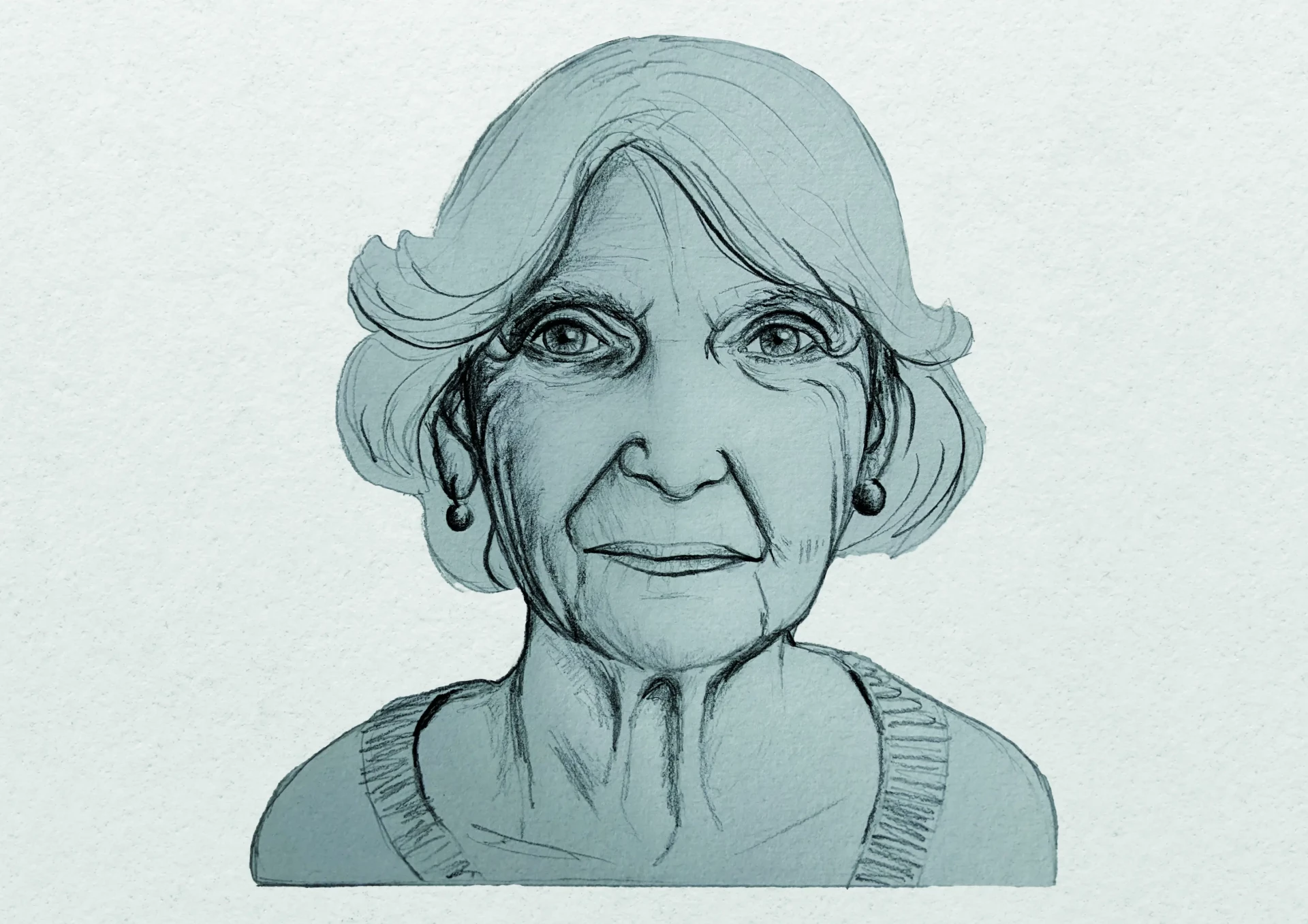
Drawing an old person is a rich, interesting, and challenging exercise. For example, portraying the face of an old person allows you to tell a story through a face marked by time, emotions, and experience. It is about translating, in a few strokes, the softness, wisdom, fatigue, and a certain light in the eyes.
In this tutorial, we will focus on a portrait of an old person, because it is in the heart of the face that the passage of time expresses itself with the most richness. We will first look at the main characteristics of facial aging. Then, we will learn how to construct an aged face step by step.
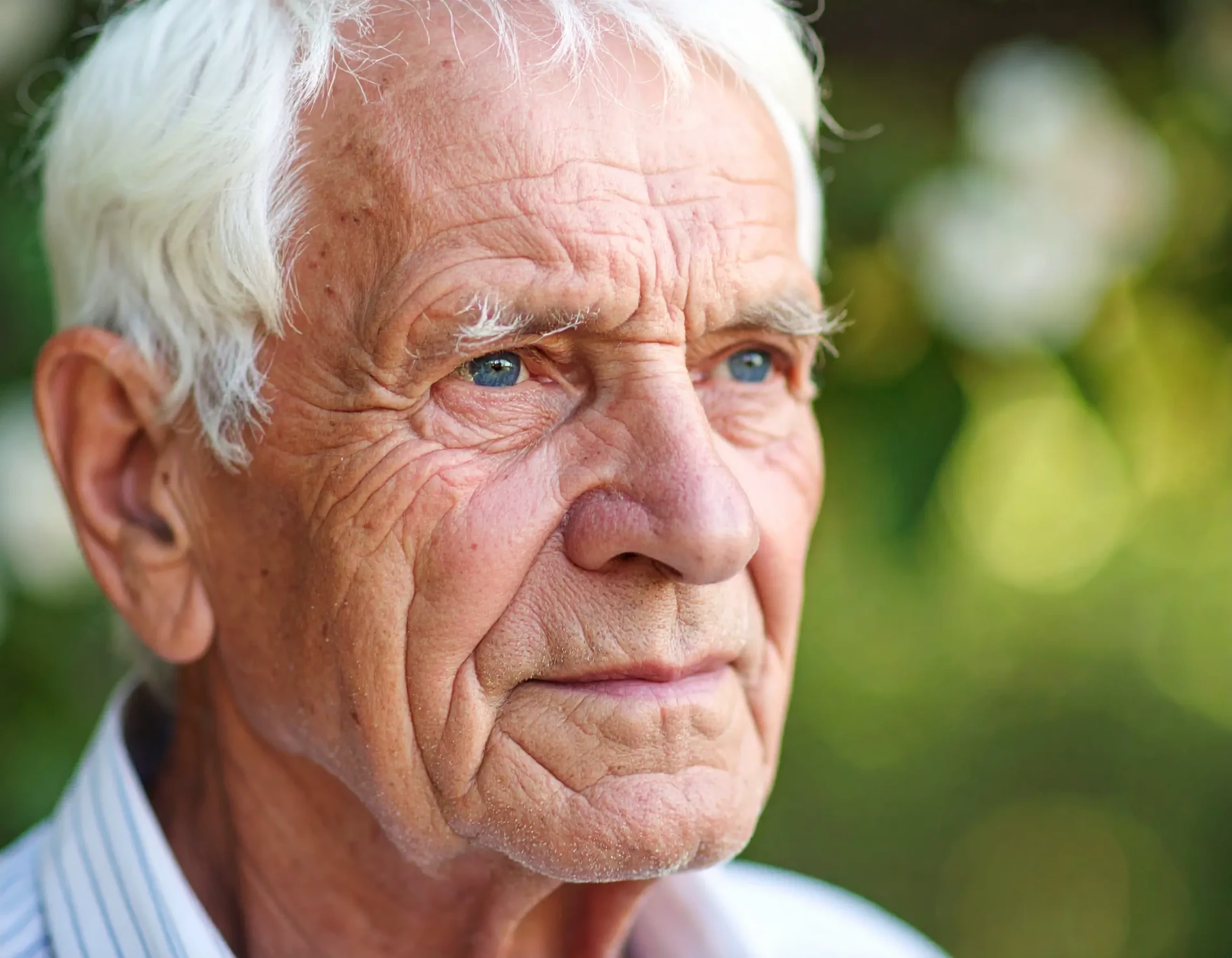
The characteristics of an aged face
Before drawing, it is essential to observe your subject. Facial aging is expressed through several distinctive signs that are important to understand in order to accurately depict them.
Wrinkles
Wrinkles are not just simple lines to be drawn automatically. They follow specific patterns:
• Expression lines: they appear where muscles regularly contract, such as the forehead, around the eyes (crow's feet), or around the mouth.
• Gravitational wrinkles: they are related to the gradual sagging of tissue over time. They are found in the nasolabial folds (from nose to mouth), chin, and neck.
• Fine lines: they are visible especially around the lips and eyelids.

Skin
• It becomes thinner, sometimes almost translucent in certain areas (such as the temples or cheeks).
• It loses elasticity, which creates a sagging effect.
Pigment spots, visible veins or an uneven texture may also appear.

Facial features
• The cheeks hollow out, and the cheekbones become more prominent.
• The temples slightly recede.
• The oval shape of the face softens, or even fades away.
• The ears and nose often appear longer (because they continue to grow with age).

Eyes
• The eyelids can droop slightly, giving a more closed look.
• Dark circles appear, marking fatigue or age.
• The gaze often gains in depth, in gentleness, and can express more emotion than that of a younger person.

Drawing an elderly Person step by step
Using an HB pencil, start by drawing the oval of the face, then the shape of the neck and the upper torso. Don't worry about precision: these shapes will be reworked later.
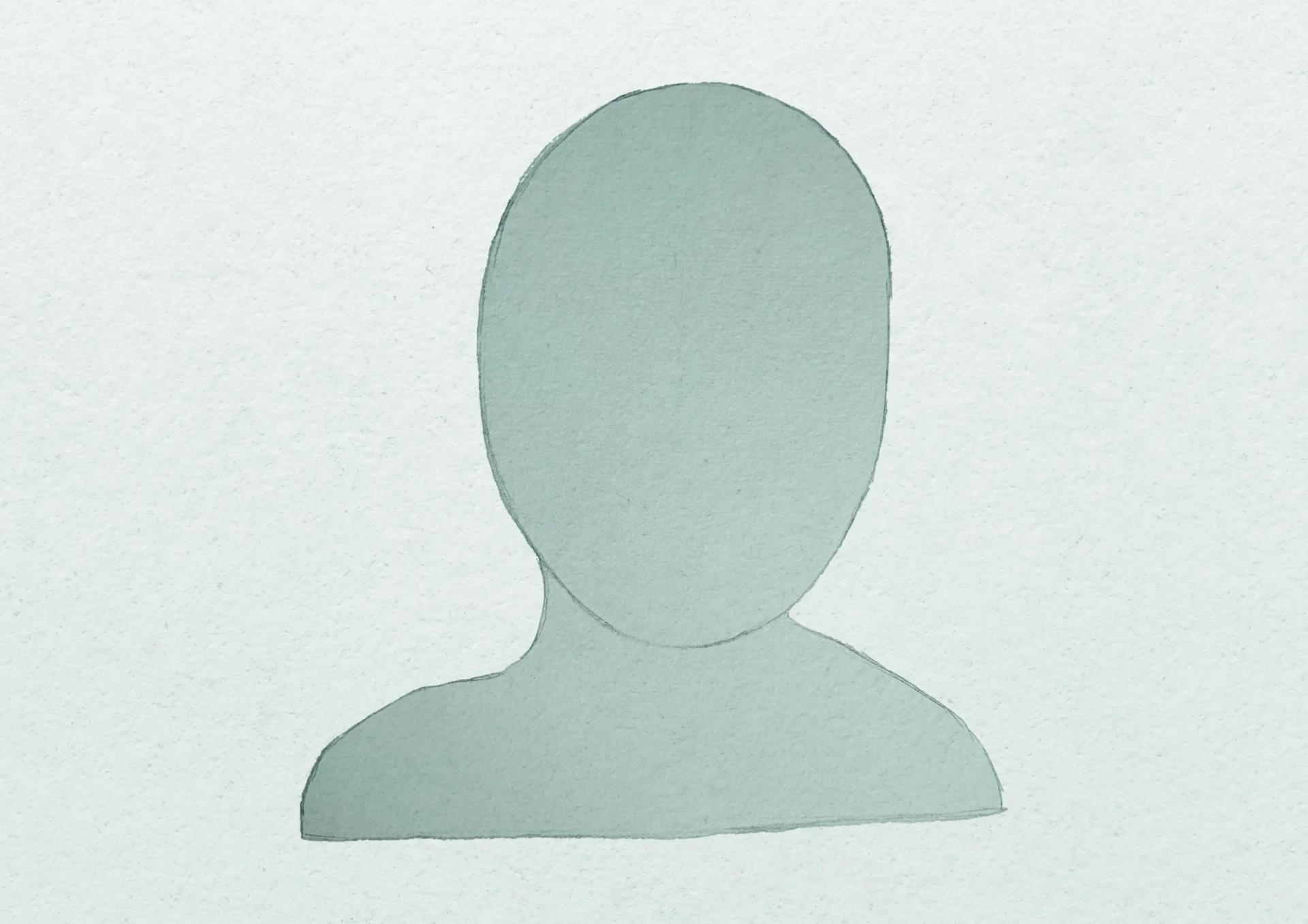
Draw a vertical axis in the center of the face using a ruler. Then divide the oval into four parts with horizontal lines. These markers will help you correctly position the eyes, nose, and mouth.
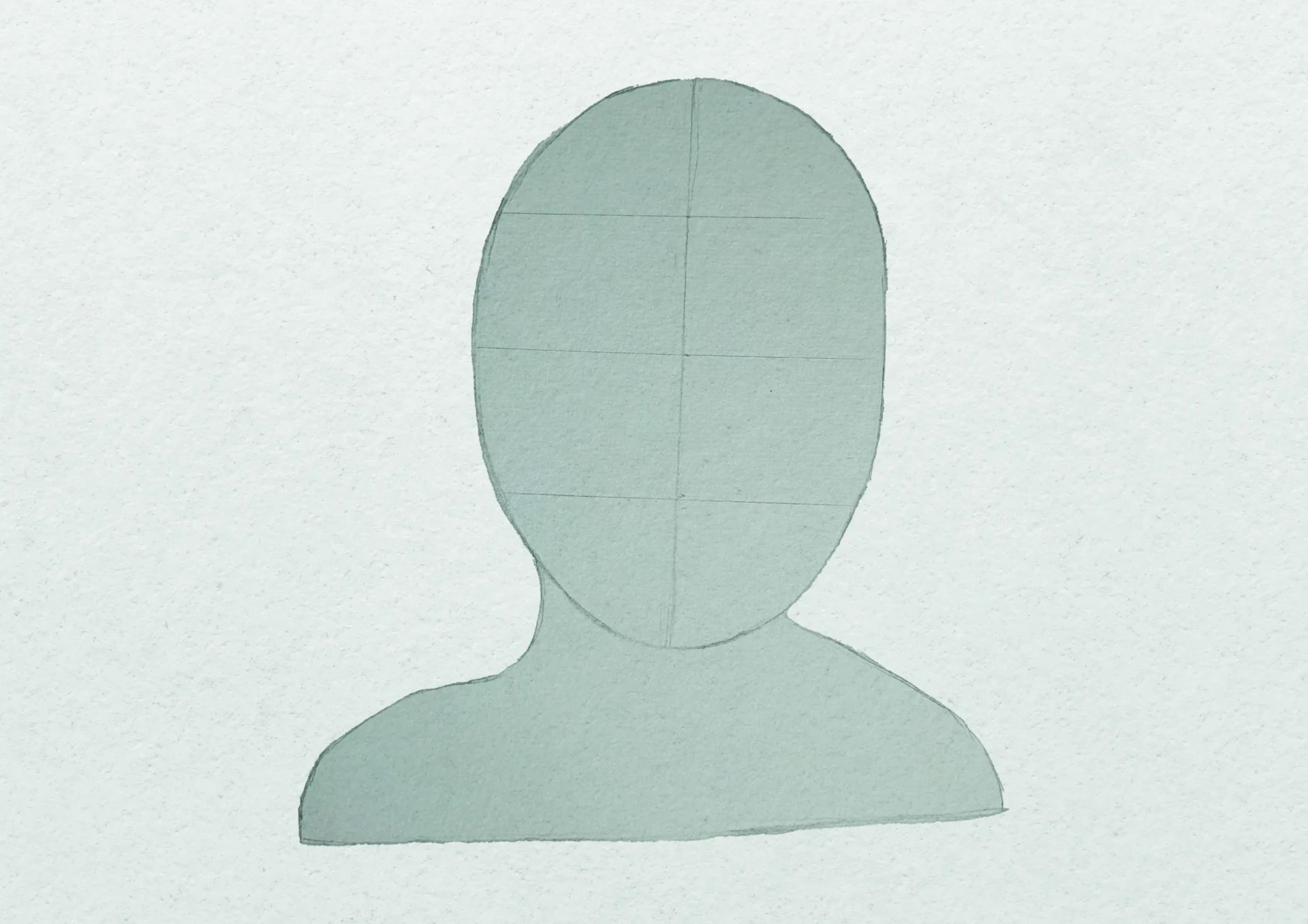
Place the facial features schematically:
• The eyes on the second horizontal marker.
• The nose, using a central circle and two small circles on each side for the nostrils.
• The mouth with a horizontal line between the two lower markers.
• The appearance of hair at the first horizontal mark.
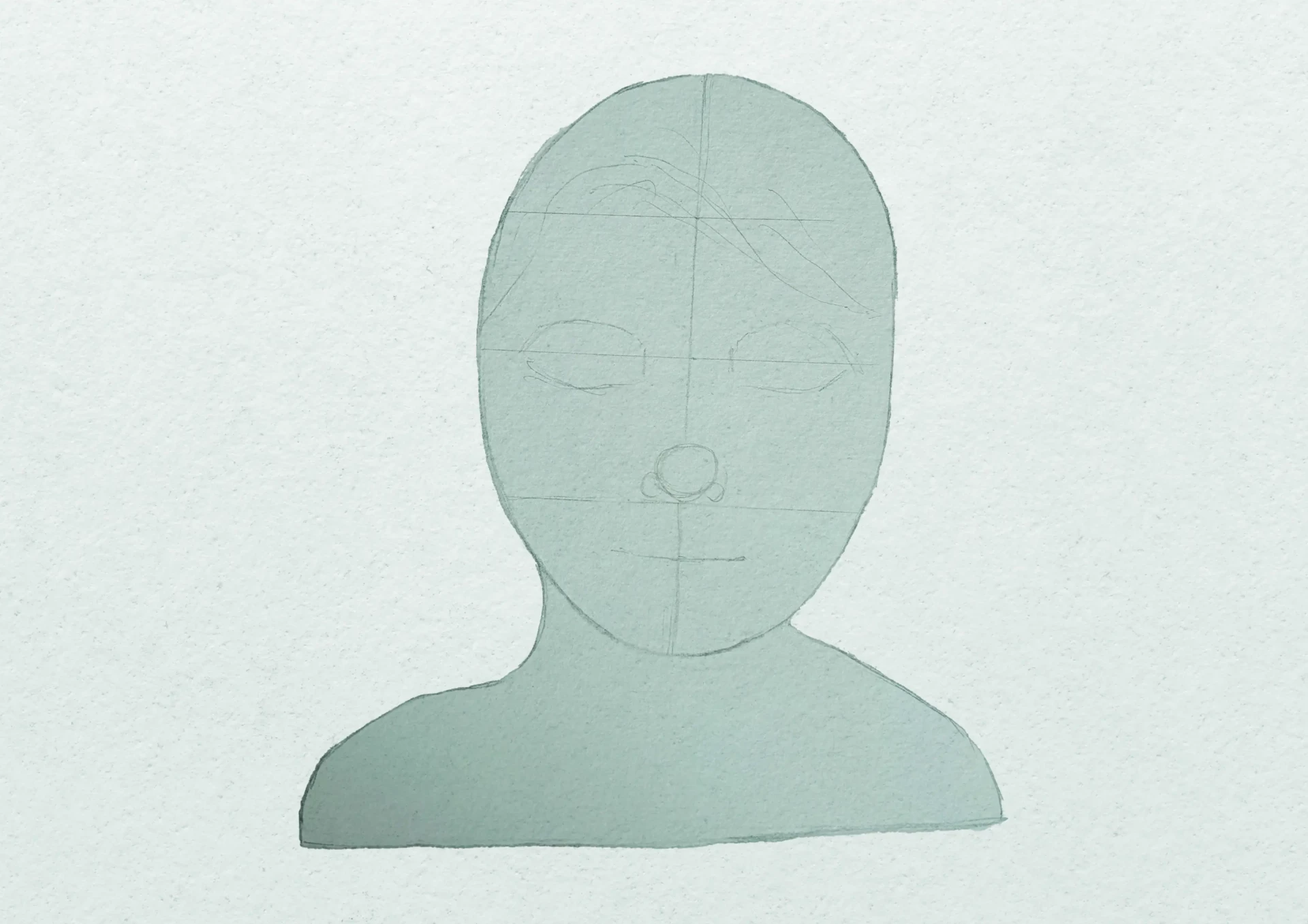
Erase any unnecessary lines. Do not hesitate to redraw some outlines if you have erased too much.
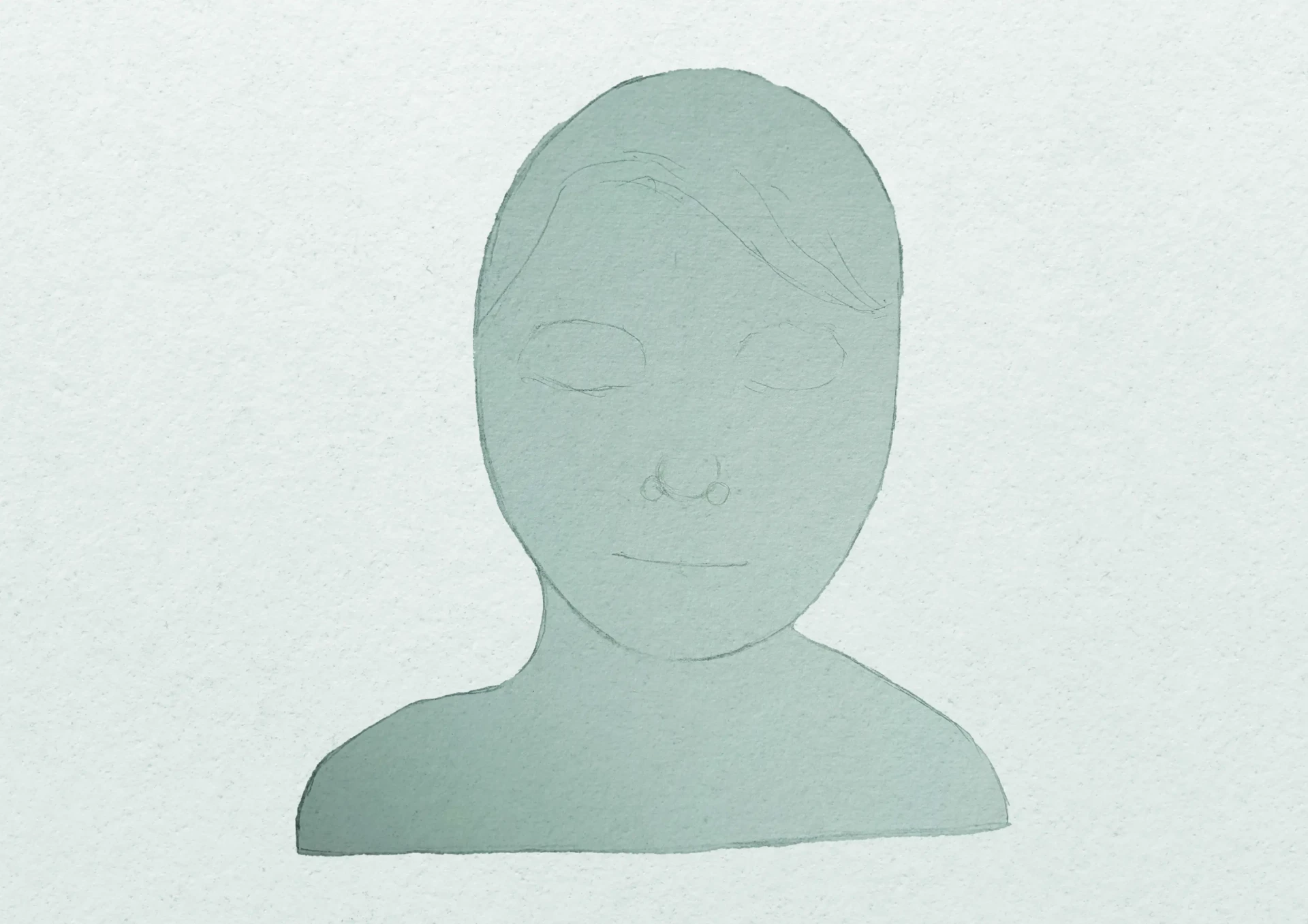
Sharpen the eyes, which are often more sunken, with heavier eyelids. Draw a slightly longer nose than for a young face, and a thinner mouth, sometimes drooping at the corners.
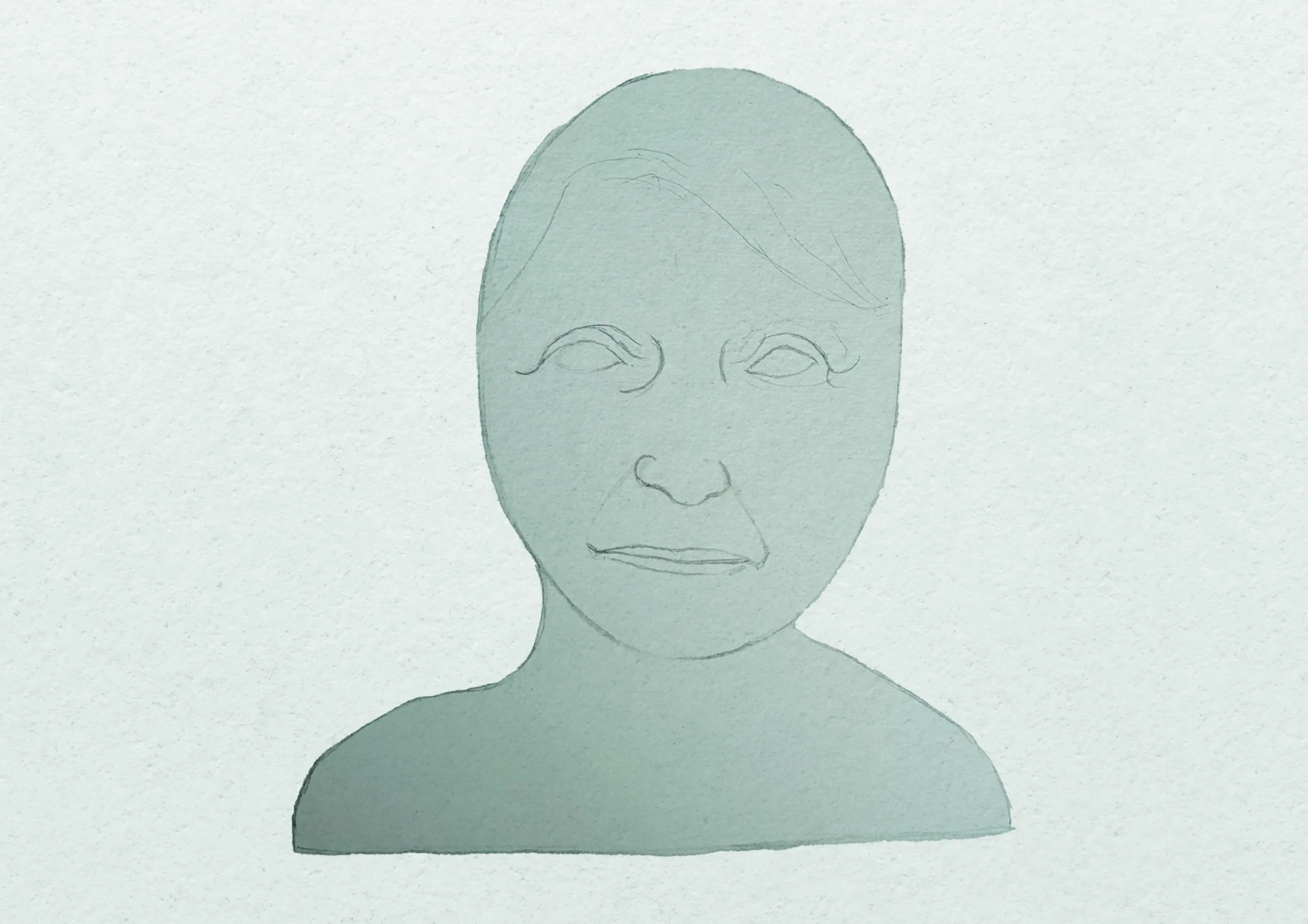
Adding volume to the drawing
Add volume to the face: more hollow cheeks, slightly sagging temples, and a more pronounced chin. Begin to place the first wrinkles:
Front: horizontal wrinkles.
Eyes: crow's feet, creased eyelids.
Cheeks: nasolabial folds, under-eye creases.
Lips: vertical wrinkles, side wrinkles.
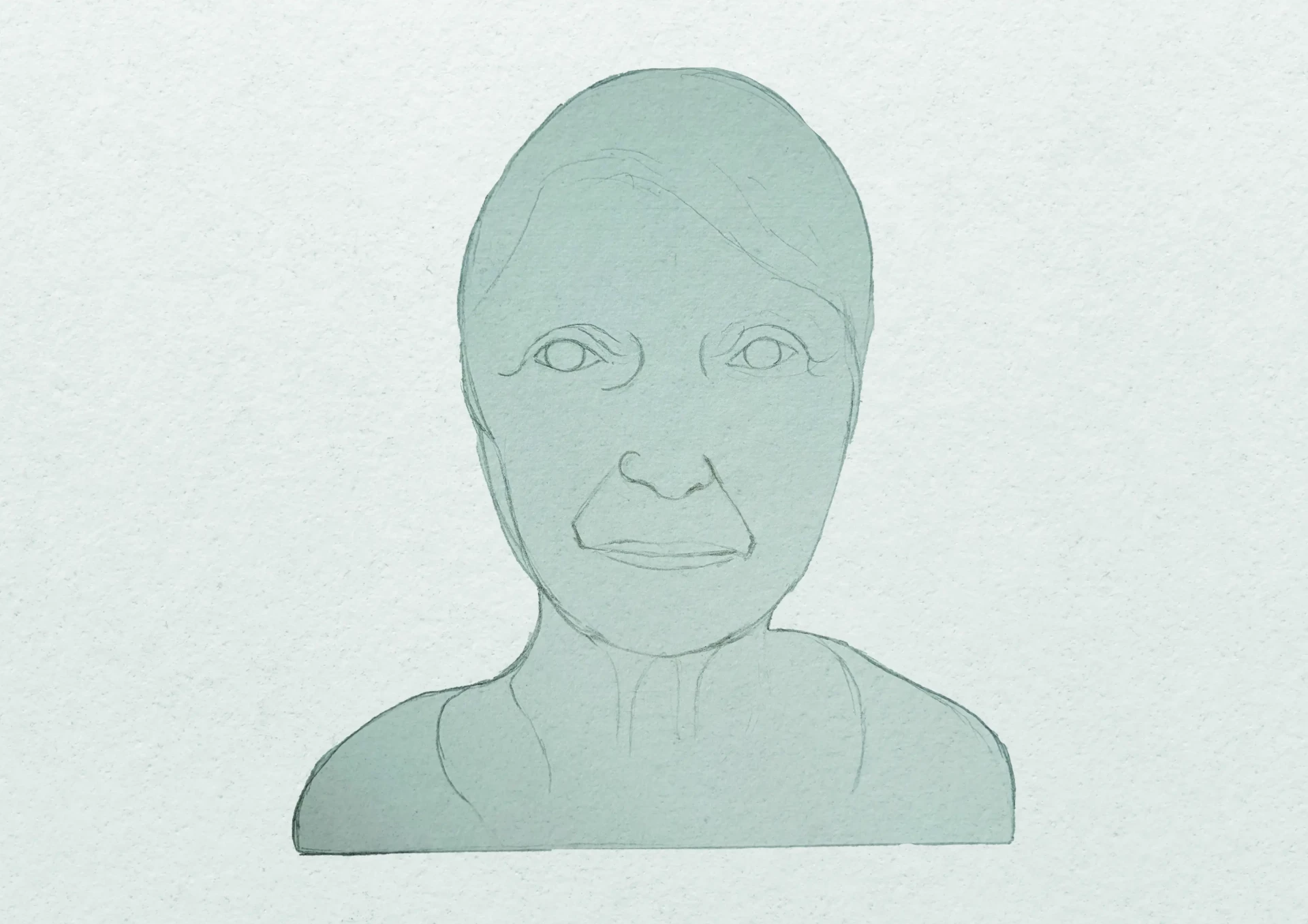
Draw the hair in a flowing manner, using light strokes to define the overall mass.
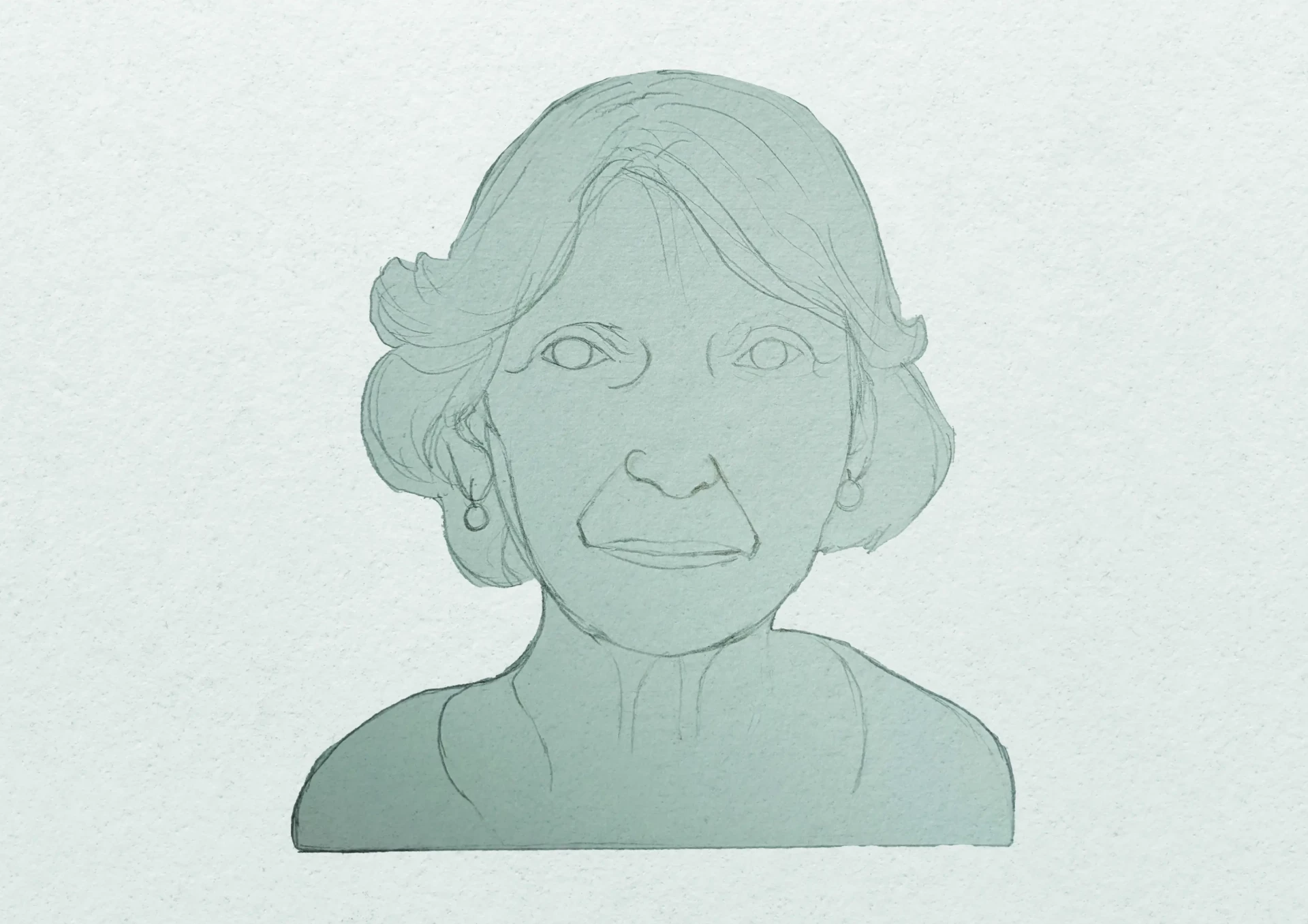
Smooth out the wrinkles around the eyes and mouth. At this point, your drawing will start to come to life.
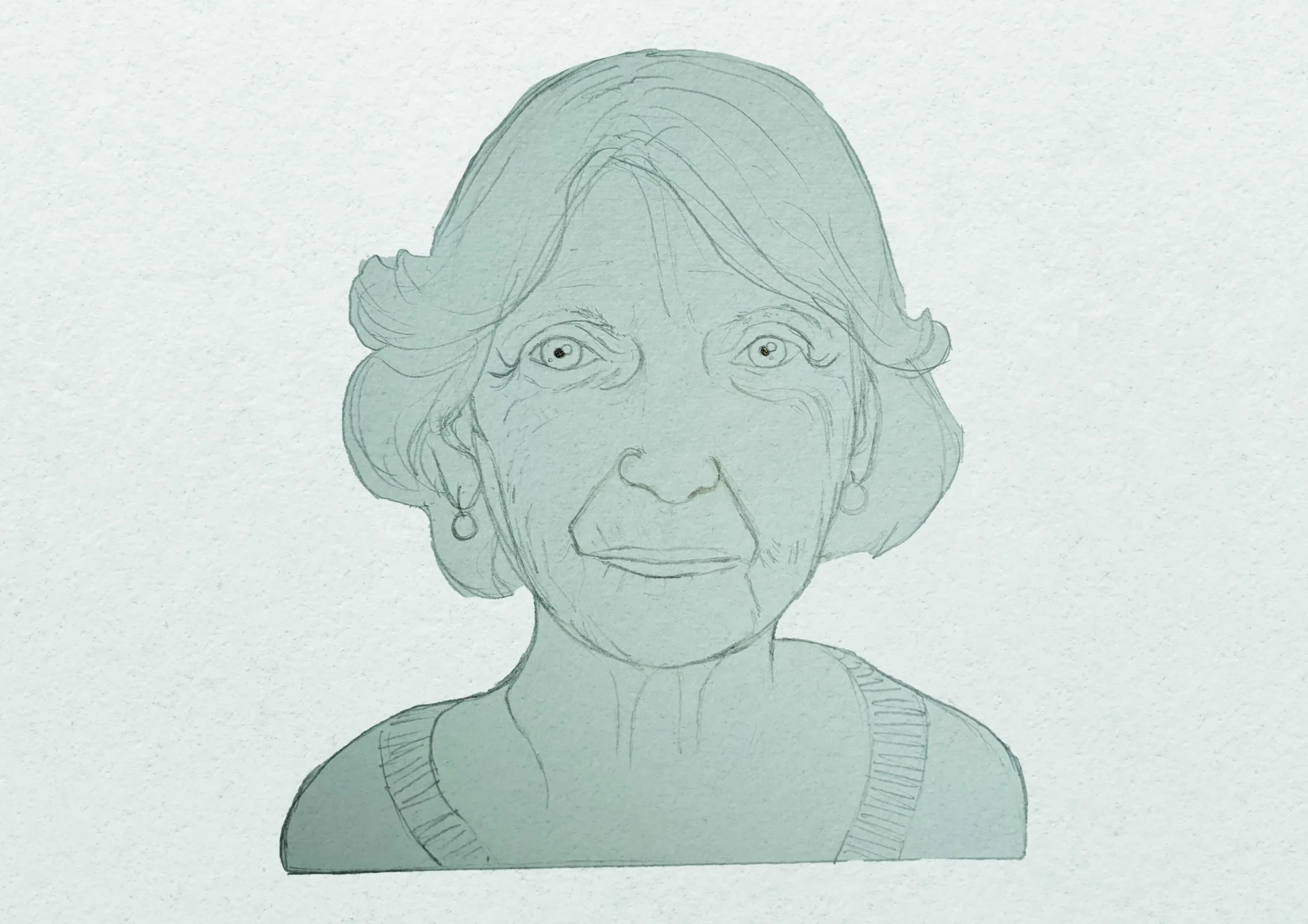
With a 2B or 4B pencil, start to gradually add shadows. Emphasize the areas around the wrinkles to give them depth.
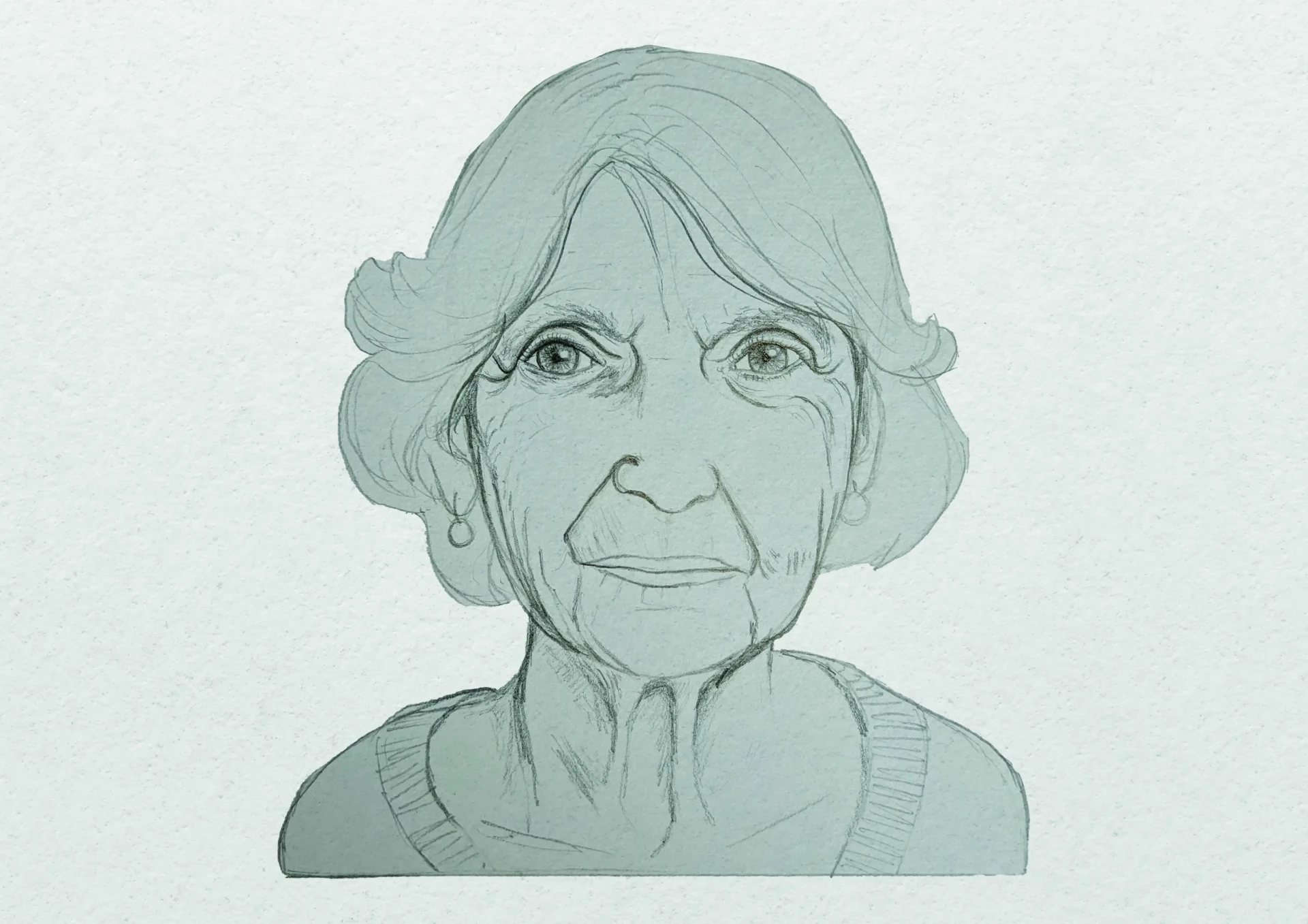
Blurring your drawing
Slightly blur the contours of the face, and highlight the shadow on the eyelids and the hollows of the face.
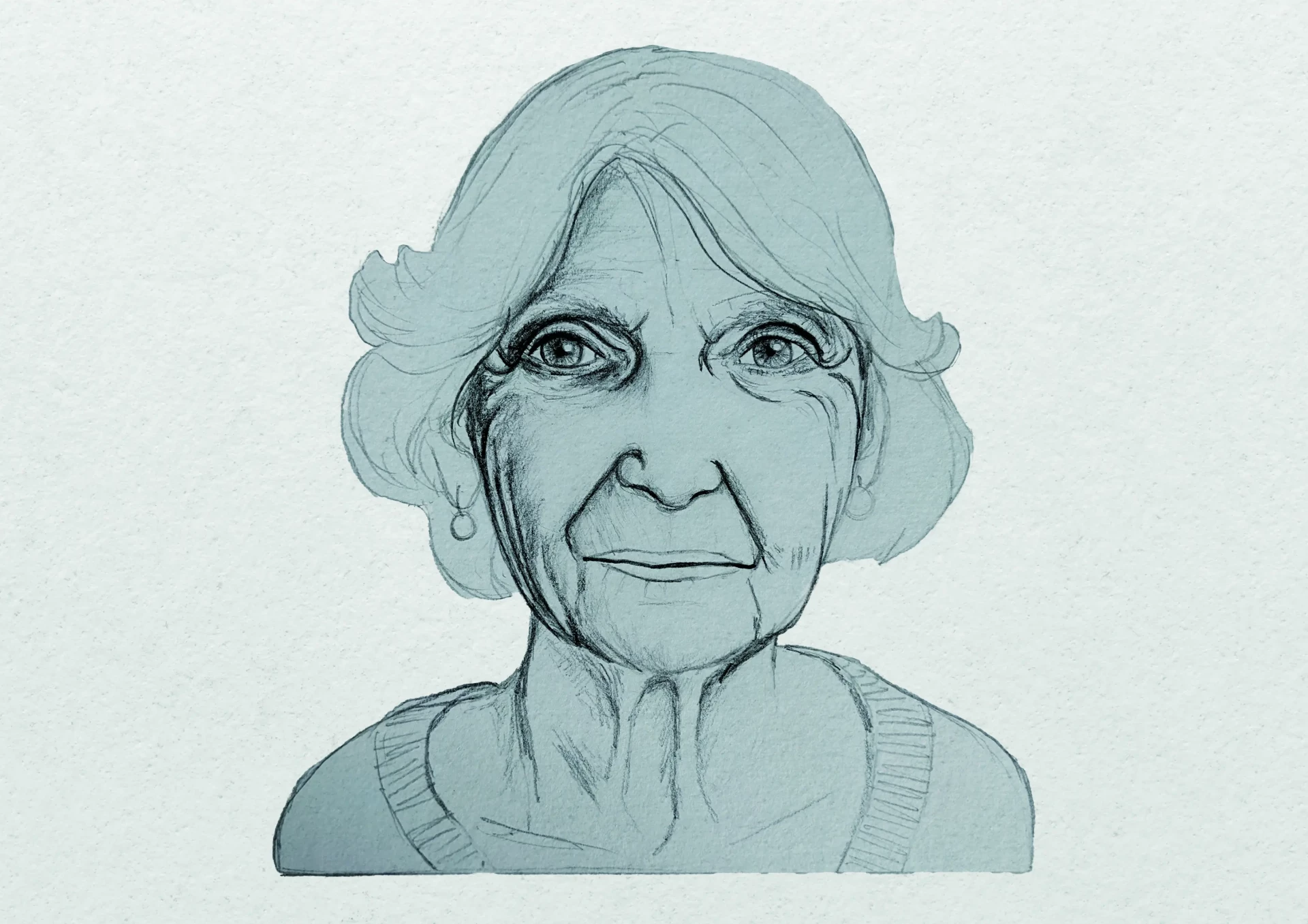
With a 6B or 8B pencil, enhance the contrasts: around the ears, under the jaw, and in the deep folds. Add some strands of hair. Also consider the texture:
• Slightly wrinkled skin.
• Wrinkles.
• Thinner eyebrows, sometimes sparse.
Here it is, your portrait of an old person is finished!

Drawing an old person might seem difficult at first. Yet, by gradually adding the marks of time (wrinkles, sagging skin, altered volume) and subtly playing with shadow and light, the result can quickly become very expressive.
Have a go at observing old people around you or in the street, and quickly sketch them from life. It’s an excellent exercise to better understand the characteristics of aging… and to learn to draw with sensitivity.
Writer and illustrator: Sacha Fatticcioni

